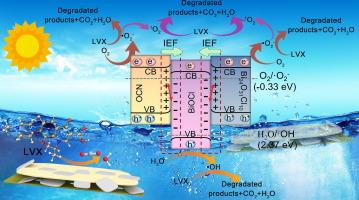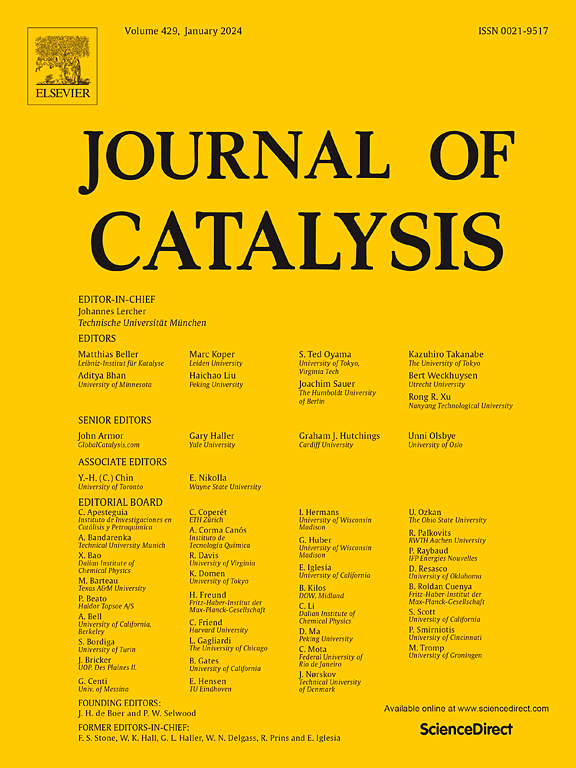The sandwich-shaped double S-scheme heterojuction OCN/BiOCl/Bi24O31Cl10 efficiently degrades levofloxacin and its charge transfer mechanism
IF 6.5
1区 化学
Q2 CHEMISTRY, PHYSICAL
引用次数: 0
Abstract
The rapid recombination rate of photogenerated charges presents considerable challenges for the rational design of high-performance, stable photocatalysts. In this study, we integrated the characteristics of oxygen doping and heterojunctions into oxygen-doped g-C3N4/BiOCl/Bi24O31Cl10 (OCN/BiOCl/Bi24O31Cl10) using a straightforward impregnation-calcination method. Oxygen doping disrupts the symmetric atomic arrangement in pure-phase samples, optimizing the electronic configuration of active sites at the reaction interface and enhancing the coupling between anions and cations. The introduction of BiOCl, which offers an excellent coordination environment, in conjunction with Bi24O31Cl10, creates a dual-S heterojunction. This structure establishes dual reaction interfaces that facilitate efficient dual electron ’transport channels,’ promoting the rapid transfer of charge carriers among OCN, BiOCl, and Bi24O31Cl10. Experimental results demonstrate that the OCN/BiOCl/Bi24O31Cl10 heterojunction material achieves a degradation efficiency of 96.1 % for 10 mg·L−1 levofloxacin under visible light. Notably, in situ measurements obtained through Kelvin probe force microscopy (KPFM) and density functional theory (DFT) calculations jointly reveal a unique chemical environment and electronic structure arising from the formation of an internal electric field among OCN, BiOCl, and Bi24O31Cl10, thereby providing enhanced pathways for the migration of photogenerated charge carriers. Furthermore, the heterostructure significantly reduces the transport distance of photogenically induced charges and decreases internal transport resistance, thereby improving the separation efficiency of photogenerated electron-hole pairs. This mechanism is crucial for the markedly enhanced photocatalytic degradation performance of OCN, BiOCl, and Bi24O31Cl10 materials. In summary, this work explores the synergistic effects among multiple modifications, providing insights for the precise design of efficient and stable photocatalytic degradation systems.


求助全文
约1分钟内获得全文
求助全文
来源期刊

Journal of Catalysis
工程技术-工程:化工
CiteScore
12.30
自引率
5.50%
发文量
447
审稿时长
31 days
期刊介绍:
The Journal of Catalysis publishes scholarly articles on both heterogeneous and homogeneous catalysis, covering a wide range of chemical transformations. These include various types of catalysis, such as those mediated by photons, plasmons, and electrons. The focus of the studies is to understand the relationship between catalytic function and the underlying chemical properties of surfaces and metal complexes.
The articles in the journal offer innovative concepts and explore the synthesis and kinetics of inorganic solids and homogeneous complexes. Furthermore, they discuss spectroscopic techniques for characterizing catalysts, investigate the interaction of probes and reacting species with catalysts, and employ theoretical methods.
The research presented in the journal should have direct relevance to the field of catalytic processes, addressing either fundamental aspects or applications of catalysis.
 求助内容:
求助内容: 应助结果提醒方式:
应助结果提醒方式:


